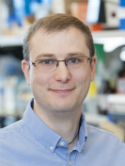| Abstract: |
BACKGROUND/AIMS: It is unknown whether cancer stem cells respond differentially to treatment compared with progeny, potentially providing therapeutic vulnerabilities. Our program pioneered use of ultra-high single dose radiotherapy, which cures diverse metastatic diseases at a higher rate (90-95%) than conventional fractionation (~65%). Single dose radiotherapy engages a distinct biology involving microvascular acid sphingomyelinase/ceramide signaling, which, via NADPH oxidase-2-dependent perfusion defects, initiates an adaptive tumor SUMO Stress Response that globally-inactivates homologous recombination repair of double stand breaks, conferring cure. Accumulating data show diverse stem cells display heightened-dependence on homologous recombination repair to repair resolve double stand breaks. METHODS: Here we use colorectal cancer patient-derived xenografts containing logarithmically-increased Lgr5+ stem cells to explore whether optimizing engagement of this acid sphingomyelinase dependent biology enhances stem cell dependent tumor cure. RESULTS: We show radioresistant colorectal cancer patient-derived xenograft CLR27-2 contains radioresistant microvasculature and stem cells, whereas radiosensitive colorectal cancer patient-derived xenograft CLR1-1 contains radiosensitive microvasculature and stem cells. Pharmacologic or gene therapy enhancement of single dose radiotherapy-induced acid sphingomyelinase/ceramide-mediated microvascular dysfunction dramatically sensitizes CLR27-2 homologous recombination repair inactivation, converting Lgr5+ cells from the most resistant to most sensitive patient-derived xenograft population, yielding tumor cure. CONCLUSION: We posit homologous recombination repair represents a vulnerability determining colorectal cancer stem cell fate, approachable therapeutically using single dose radiotherapy. © Copyright by the Author(s). Published by Cell Physiol Biochem Press. |












